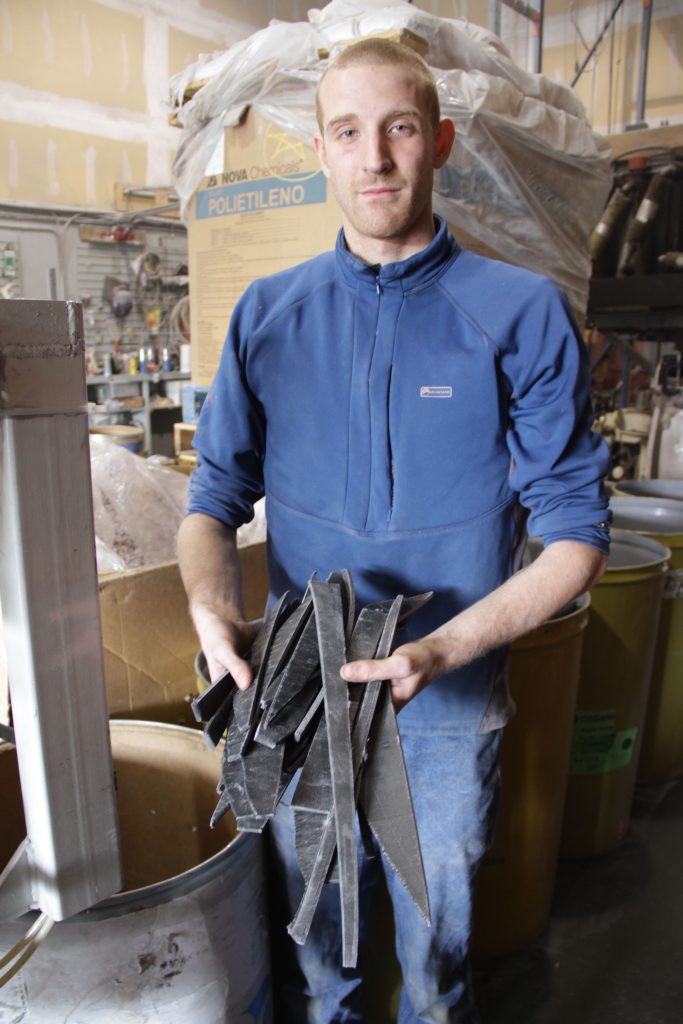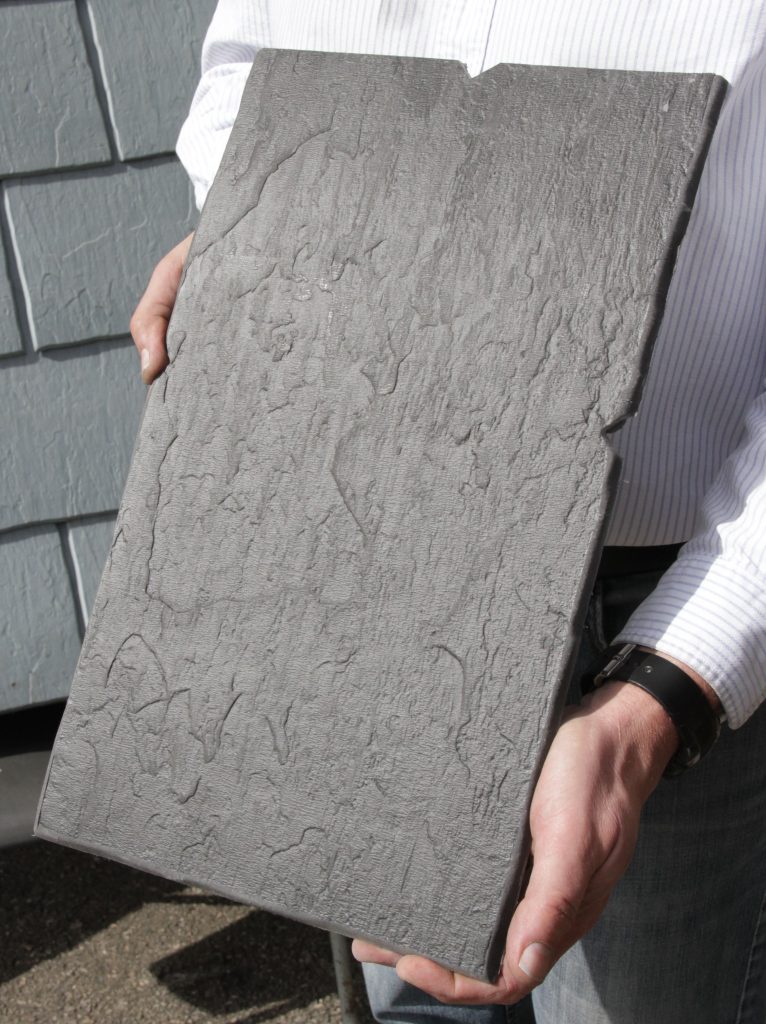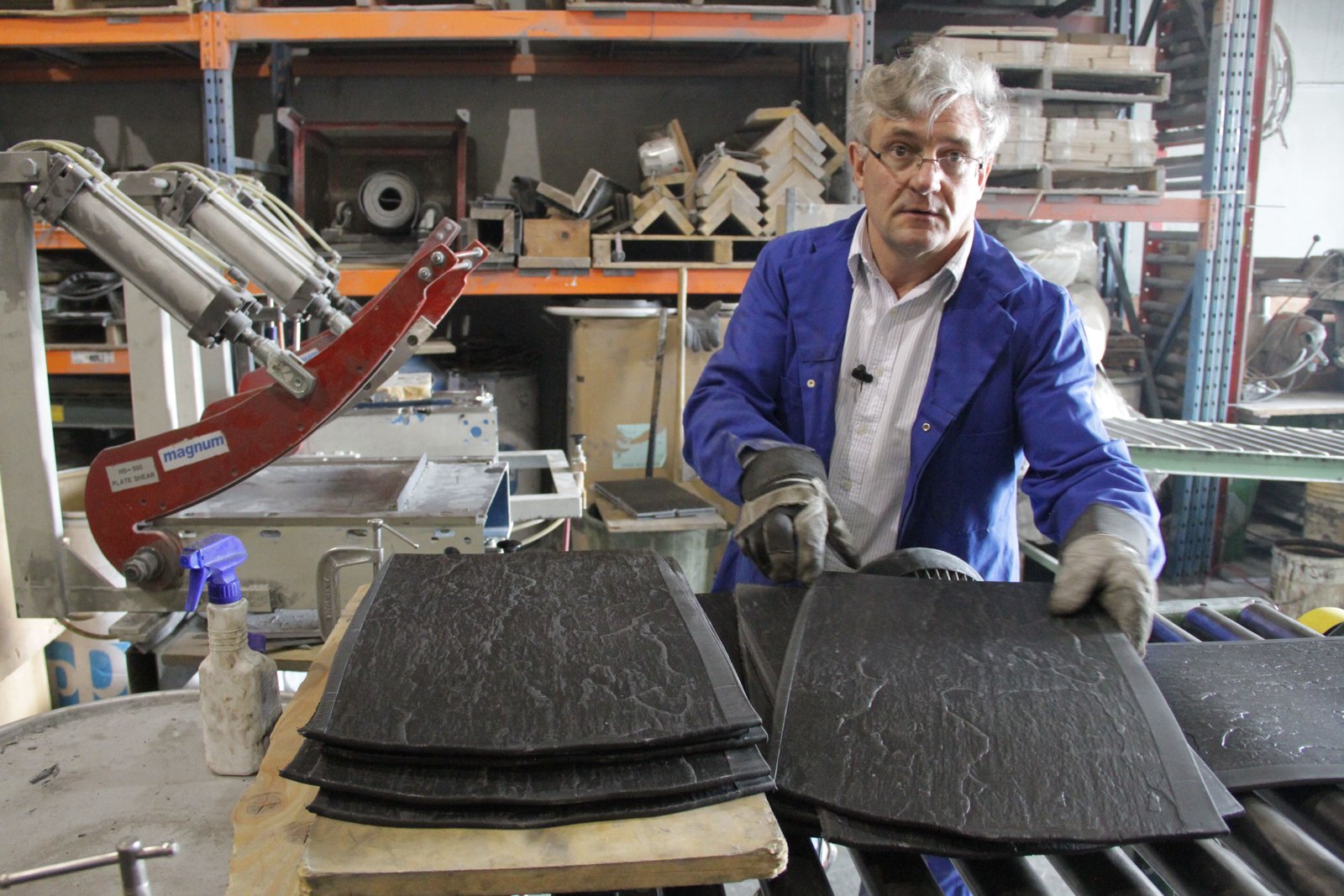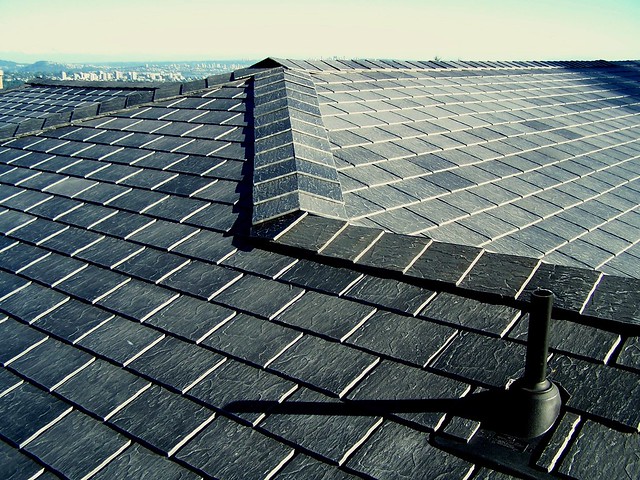By David Dodge and Duncan Kinney
What if you could take waste limestone, add in some recycled milk jugs and grocery bags, and make roof shingles that last 50 years and can eventually be melted down and remade into new shingles?
That’s the whole idea behind Cradle to Cradle design and manufacturing.
Aluminum and paper are the two great recycling success stories of our time. But recycling almost anything else is almost assuredly downcycling: the product you get is typically a step down in quality and functionality from what it was before. Cradle to Cradle flips that idea on its head.
Cradle to Cradle is a book written by German chemist Michael Braungart and U.S. architect William McDonough in 2002. It reimagines our day-to-day materials, not as stuff that ends up in the dump or even in the recycle bin, but as nutrients circulating in a healthy ecosystem. And while it started out as a book, the concepts within eventually got turned into a third party certification system that certifies companies that make products that continuously upcycle materials within a closed loop.
This idea took us to Burnaby, British Columbia, and the pilot plant run by GR Green Building products. They produce a synthetic slate roof tile that’s made out of 80 per cent pulverized limestone and 20 per cent recycled plastic.

Spencer McLean gets ready to reuse trimmings from GR Green’s shingles. They hope to get their synthetic slate shingles Cradle to Cradle certified once they are in full production. Photo David Dodge, Green Energy Futures
The limestone is a waste product that they get cheap from manufacturers that make hydrated lime and quicklime. The plastic is a mix mostly of shredded plastic bags and milk jugs.
“The process that we developed, which is different than extrusion or injection molding, allows us to use some recycled plastic with minor contaminants in it; it doesn’t have to be totally pure. In fact, the little impurities causes minor imperfections in our product and actually makes it look more real,” says Geoff Wensel, the president of GR Green.
A typical roof made from this product will use 40,000 plastic bags and 4,000 milk jugs. Wensel and his partners invented the process 10 years ago in a kitchen with a rolling pin. Now they’ve got a pilot plant that produces a slate look-alike product that they sell to roofing companies.
“This is a product we have been using for years, and it is a really good imitation of a slate product. Most of the people that actually see this product on a roof or any of the shows that we do have a hard time telling the difference between this and the real slate,” says Dale Chomechko, the president of DC Roofing in Surrey, B.C.
It’s also cheaper and handles cold weather better than natural slate. It’s less slippery to walk on and you don’t have to worry about it breaking under your feet, important considerations for a roofer.
“Our finished products can be reused after about 50 years. They can be taken off a house and actually reprocessed into new finished materials, so nothing ever goes to the dump,” says Wensel.
The Energy Angle

The shingles that GR Green makes look like slate, but are made from recycled materials and will last up to 50 years. Photo David Dodge, Green Energy Futures
So while this is really cool, why does Green Energy Futures care about Cradle to Cradle? Well, energy can neither be created or destroyed — it just changes form into something we can either use or we can’t. When you think of all of the complex energy- intensive materials we use on a daily basis and what happens when their useful life is complete, it becomes clear that we’re not being very energy efficient. Cradle to Cradle changes the script by continuously upcycling its materials in a closed loop.
At GR Green you see the offcuts and the trim from their manufacturing process go right back into the mix with all of the other materials. Cradle to Cradle certification is also very concerned about the carbon and energy footprint of its products.
I didn’t think I would have to use such drugs so early, but I got over it. Earlier, I’ve read and read a lot about this medication. My doctor prescribed me Viagra. I haven’t experienced any side effects described at https://www.sehdph.org/viagra-100-mg/ for far (I’ve been taking the drug for two months). Viagra acts throughout the night. You can find lots of such drugs at the pharmacies, and they’re actively discussed. Quality, performance and efficiency of Viagra fully satisfied me.
“We’ve done some initial calculations on our carbon footprint and it is miniscule compared to other roofing products and that’s because our raw materials are all recycled or waste and our process is actually quite energy efficient overall,” says Wensel. It also helps that they’re in B.C. and their grid electricity is low carbon hydro.
GR Green will be looking to get its official Cradle to Cradle certification in the future as it gets set to raise money and scale up their plant. Getting the certification makes it easier for green builders and designers to know the materials they are using are genuinely green.
The bonus of Cradle to Cradle certification
Brandy Burdeniuk is a principal at EcoAmmo, a green design consulting business based in Edmonton. She makes the decisions about what kind of green products go into a building.
“Cradle to Cradle certification is good for a lot of things, mainly removing the need for you as a design professional to constantly keep informed on exactly what product and material you’re putting into a building. So, it allows for us to create a list or a database of products that we can trust,” says Burdeniuk.
Because so many products go into a building it becomes incredibly time consuming to research the green bonafides of each and every one. Being able to trust a certification like Cradle to Cradle is huge and makes those products more likely to be used.


